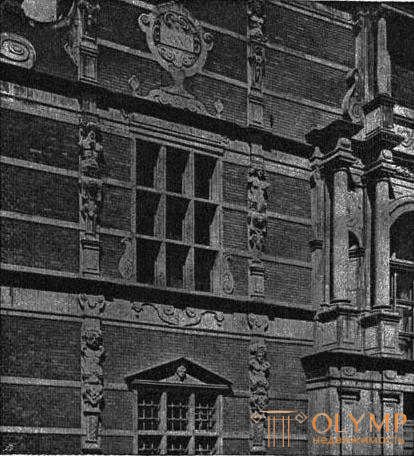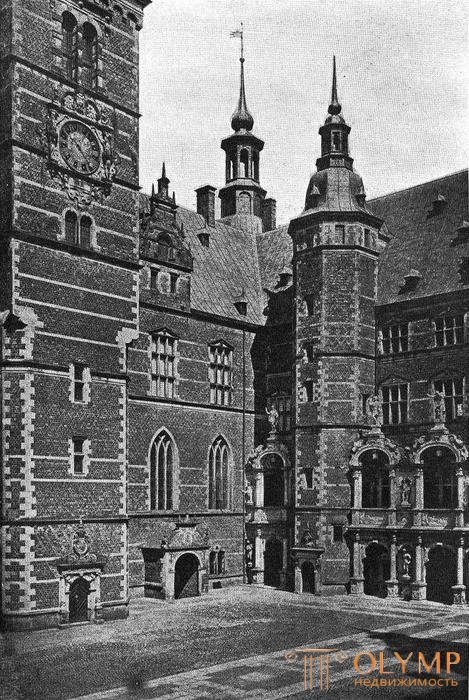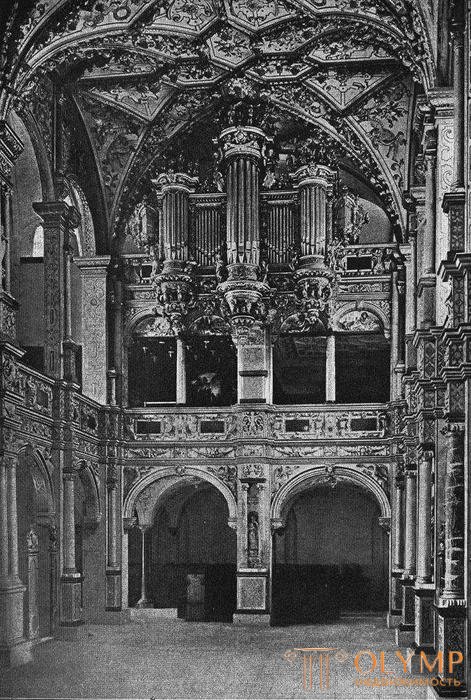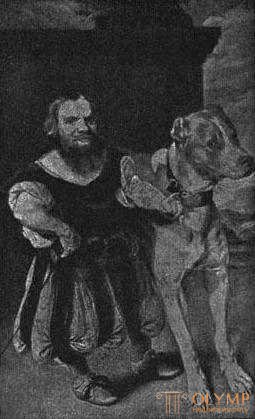
1. Overview of the development of Danish art
The development of art in Denmark seriously lagged behind Western European, therefore, in the period under review, the overwhelming predominance of German Dutch and French masters was observed in the country. At the same time, the 17th century left a significant number of works of art in Denmark, largely thanks to the patronage of King Christian IV.
If both the northern kingdoms, Sweden and Denmark-Norway, now occupied a great power position in the council and on the battlefields of nations, the ground for the development of their spiritual and artistic life was still not prepared. The yards of Stockholm and Copenhagen, as before, could satisfy their desire to be in harmony with the other great powers in the fine arts only by attracting foreign artists. The Germans and the Dutch, and then the French, were crowds, and if few of them found an independent artistic personality, then this does not detract from their meaning in the sense of sowing artistic seeds into fertile nov.
In Denmark, King Christian IV (1588–1648) was such an active builder and lover of art that the history of Danish art distinguishes Christian IV. This style, preferring a brick building with ashlar stone cladding, is only "one of the links of the German-Dutch Renaissance." A high pediment with developing steps and picturesque, metal-covered wooden towers define the exterior impression of churches and palaces. The decoration of pilasters and columns is limited for the most part to the portal and gable. Curls and forging are applied in very perfect forms. The best construction of this style is the famous Fredericksborg Castle (1602–1625) washed by the dark waves of the lake, restored after the fire of 1859 by Meldalem in the old style. Its architect is considered the king himself, and the performers are called Yörg von Freiburg and Hans van Steenwinkel Jr. (1587–1639), a native of Copenhagen, the eldest son of Steenwinkel, who resettled from Holland. Four outbuildings with corner towers surround the square of the honorable courtyard in the old French manner. The front wing is a low, decorated with Tuscan semicircular arcades, a terrace punched by a magnificent gate, the most intimate work of Steenwinkel. Both lower floors of the secret facade, facing the courtyard, are allowed in the equally decorated "gazebos". The main tower rises in the courtyard near the western side wing, in which the knightly hall is located above the church. The church with flat vaults has arched windows, its side naves carry empores at the top, and the pillars are decorated alternately with simple and twin rooms, and on the lower floor Ionic, in the upper Corinthian columns; all planes are animated by cartouches and arabesques with abundant gilding. In general, this is one of the most magnificent interior decorations of the Northern Renaissance. Rosenborg Castle (1610–1625) in Copenhagen is rising more simply, but swiftly, in the same style as the improbable legend ascribes to English architect Inigo Jones.
To the most seasoned secular buildings of this style belongs a long exchange in Copenhagen (1619–1624), the main entrance of which is located on the western narrow side with a wide pediment, made by Steenwinkel. Sandstone pilasters on brick facades are decorated with herms in the genus caryatids. The narrow residential building of the same style is the home of the burgomaster Hansen (1616) in Copenhagen, and the best church building is located in Hristianstad (1618–1628) in Schonen, then still owned by Denmark. Its Gothic arches are supported by slender octagonal pillars crowned with gyzyms in the form of Tuscan capitals, and its appearance, despite the massive western tower, gives the impression of a castle with its seven powerful and high gables.

Fig. 193. Partial view of the wall of the Copenhagen exchange
Steinwinkle grave chapel of Christian IV in Reskilde breathes a cleaner renaissance. This high renaissance penetrated Copenhagen only under Frederick III (1648–1670), where it is represented in its artistic simplicity by the castle of Charlottenburg (1673). In the Danish Vitruvius of Turah (1746) there are excellent shots of all the Danish buildings of that time.

Fig. 194. Frederiksborg Castle. View from the courtyard
In the Danish sculpture of the first half of this period, Hans van Steenwinkel Jr. also dominated. In any case, he is responsible for the part of the numerous, purely handicraft sculptural works that adorn the above buildings. Higher requirements were applied abroad. The wonderful bronze figures of Neptune's fountain in the courtyard of Frederiksborg Castle (1623), which were abducted by the Swedes and now standing in Schlossgarten in Stockholm, were executed by Dutchman Adrien de Vries in Prague. In the second half of the 17th century, when it was necessary to erect a monument of a higher style, they turned to the French. Lionian Abraham Cesar Lamouraux, a student of Bush, cast from lead between 1681–1688. for Kongens Nitorv, a powerful-shaped equestrian statue of Christian V, trampling the plundered "Envy."

Fig. 195. The interior of the castle church in Frederiksborg
For Danish painting of the 17th century, the history of which was painted by Madsen, besides the insignificant artistic series of decorative wall and ceiling paintings, the portraits of the court society, which are many collected in Rosenborg Castle, are important; Lund gives a complete overview of them in his large essay on portraits. In this portraiture dominated the Dutch. When Christian IV arrived, Jacob van Dort, represented in the castle of Rosenborg, is an artless, expressive double portrait of Queen Anna Katharina and her son, dressed in red (1611); Peter Isaks (1569–1624) returned to Copenhagen, a Dutchman who was born and died in Helsingborg, who wrote alive, despite the forced poses, a group portrait of the royal family in Rosenborg Castle, and the son of the famous art writer Karel arrived in Denmark in 1616 van Mander II (1579–1623), in order to perform for Frederiksborg the wall panels with images of Swedish victories, unfortunately burnt down. His son Karel van Mander III (1605–1670) is considered the founder of Danish painting. He is even reputed to be the “Danish Apelles”, and his portraits, according to the power of observation and the power of the image, adjoin the best works of the Dutch school. In the Copenhagen Museum, he is represented by several historical paintings and portraits of Admiral Ove Giedde and the dwarf Giacomo Taborca with a dog. His portrait of the married couple, hand in hand, is magnificent for the gofegermeister Segested-Yuel in Ravngolt.

Fig. 196. Portrait of the dwarf Giacomo Favorke by Karl Mander III in the Copenhagen Museum
Along with Van Mander Junior, the most prominent painter of Copenhagen was his brother-in-law Abraham Wuchters, who came with him in 1638. The portraits of Wuchters were more deliberately stylized in poses, more plastic in the design, but much colder than the portraits of Mander. His portrait of Ulrich Christian Guldenleve (1648) in a red satin costume, with a white pug behind, in front of a gray curtain (in the Copenhagen Museum), caused general admiration.
Less important than the specified portrait painters, the founders of genre painting in Denmark: the deaf-mute Oldenburg resident Wolfgang Geimbach (circa 1613–1675), represented by very good portraits in London, Kassel and Braunschweig, and in Rosenborg Castle “Changed”, by candlelight, and Tussen Helton, who arrived in Sweden in 1674 and died in 1680 as a court painter in Copenhagen. Madsen calls him quite aptly "the surrogate of Myeris." The court painter Christian V (1670–1699), Jacques d'Agar (1640–1715) was French, and his pompous portraits (for example, Christian V in Rosenborg) are already passing into the era of wigs of the 18th century.
Что бы оставить комментарий войдите
Комментарии (0)